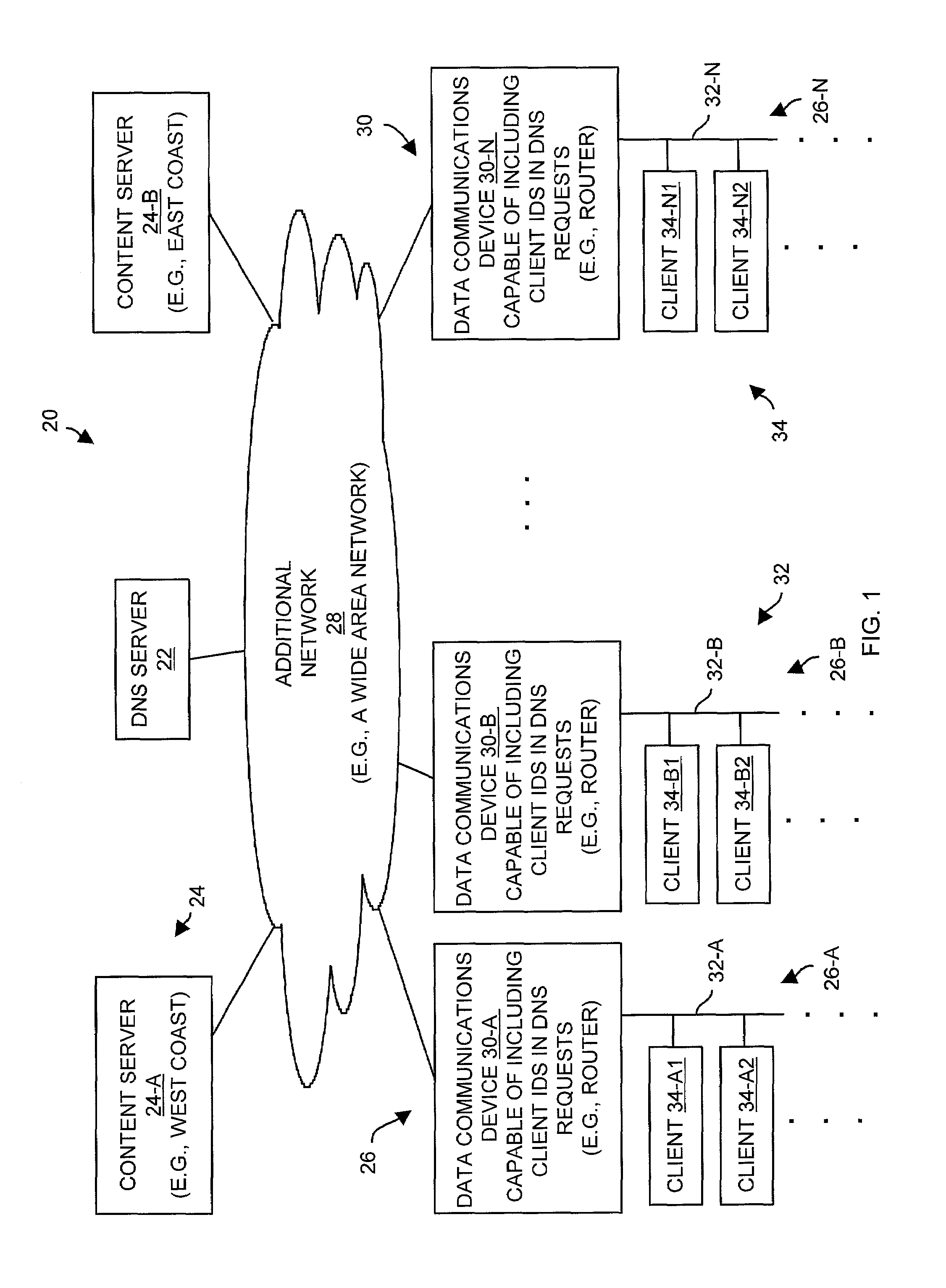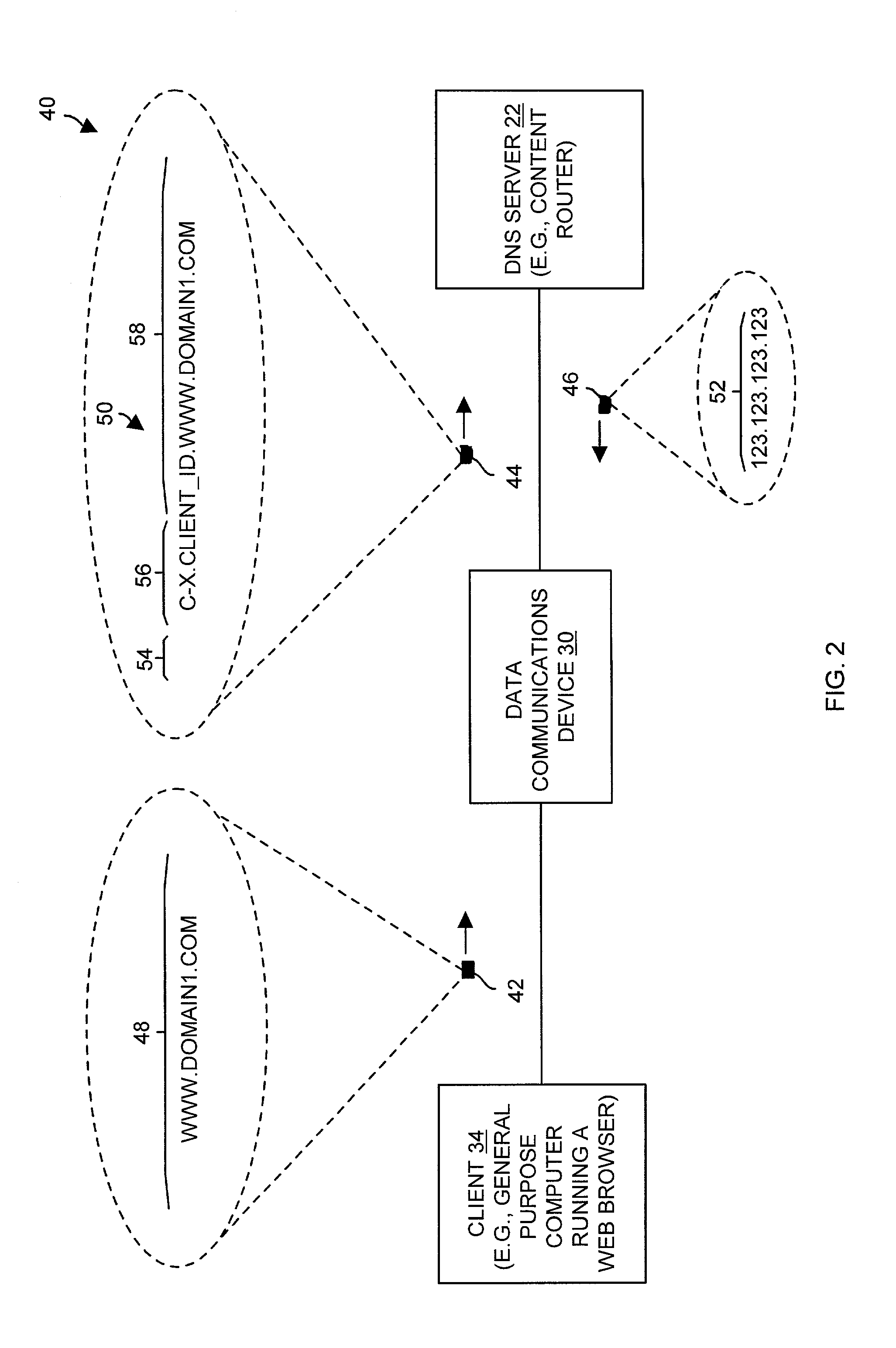Methods and apparatus for providing domain name service based on a client identifier
a domain name service and client technology, applied in the field of methods and apparatus for providing domain name services based on client identifiers, can solve the problems of difficult to achieve, no guarantee that the dns proxy server is near the client, etc., and achieve the effect of improving content routing accuracy and avoiding additional communications overhead
- Summary
- Abstract
- Description
- Claims
- Application Information
AI Technical Summary
Benefits of technology
Problems solved by technology
Method used
Image
Examples
Embodiment Construction
[0023]The invention is directed to techniques which provide domain name service (DNS) based on a client identifier that identifies a client (e.g., an Internet address of a computer running a browser application). For example, when there are multiple content servers that are capable of providing content to a client, a DNS server can select the content server which is closest to the client using the client identifier which identifies the client. Such content routing based on the client identifier provides improved accuracy over a conventional approach of selecting the content server which is closest to a DNS proxy in which the client may be far away from the DNS proxy.
[0024]FIG. 1 shows a content distribution network (CDN) 20 which is suitable for use by the invention. The CDN 20 includes a DNS server 22 (e.g., a specially configured DNS controller or content router), multiple content servers 24 (e.g., content servers 24-A, 24-B), multiple network portions 26 and additional network 28...
PUM
 Login to View More
Login to View More Abstract
Description
Claims
Application Information
 Login to View More
Login to View More - R&D
- Intellectual Property
- Life Sciences
- Materials
- Tech Scout
- Unparalleled Data Quality
- Higher Quality Content
- 60% Fewer Hallucinations
Browse by: Latest US Patents, China's latest patents, Technical Efficacy Thesaurus, Application Domain, Technology Topic, Popular Technical Reports.
© 2025 PatSnap. All rights reserved.Legal|Privacy policy|Modern Slavery Act Transparency Statement|Sitemap|About US| Contact US: help@patsnap.com



